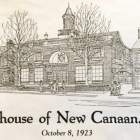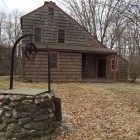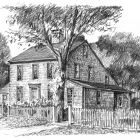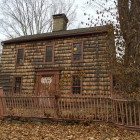Government
Public Buildings InfoSheet: The Playhouse
|
[Editor’s Note: The following has been prepared in advance of the “Forum on Public Buildings.”]
Built: 1923, Colonial Revival
Square footage: 8,560
Current uses: Movie theater with florist on ground floor, two nonprofit organizations on second floor. The town currently nets $86,000 per year in rent, with no consideration of capital costs. Committee recommendations: Given the terms of the current lease, which runs through 2022, with an option to renew for five additional years, minimize capital expenses for the building. Relevant articles: Committee Mulls Whether Town Should Continue As Owner of Playhouse (November 2017), Officials: Bow Tie Cinemas Interested in Restoring, Possibly Purchasing New Canaan Playhouse (January 2017), ‘There’s a Fine Line Between Charming and Outdated’: Playhouse Committee Convenes First Meeting (October 2015), ‘It’s Part of Why People Come to This Town’: Officials Discuss Future of New Canaan Playhouse (April 2015), New Canaan Playhouse: Private Owner Would Have More Flexibility in ADA Compliance (March 2015)
Submitted by Lesley Cousley:
Built in 1923 and designed by New Canaan architect Calvin E. Kiessling, this was the first building of the Village Improvement Company, in part of its planned development of Elm Street, then known as Railroad Avenue. The Colonial Revival style building helped set the style for development downtown.




